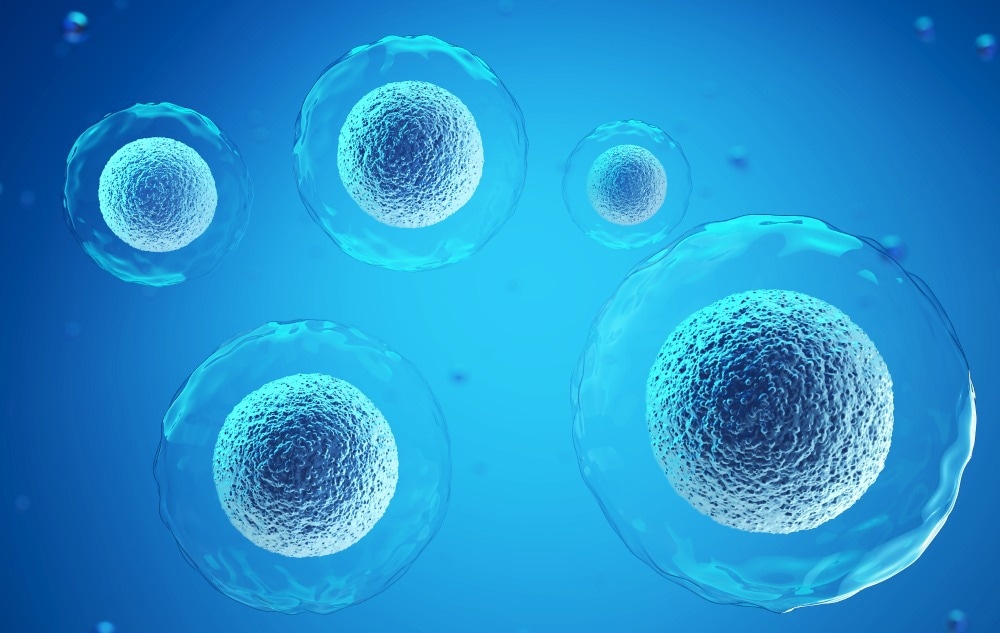A new study published in Cell Reports uncovered transcriptomic and proteomic data, cell culture, and cell-line resources that may enhance induced pluripotent stem cells (iPSCs) research.
 Study: Chimpanzee and pig-tailed macaque iPSCs: Improved culture and generation of primate cross-species embryos. Image Credit: Anusorn Nakdee/Shutterstock
Study: Chimpanzee and pig-tailed macaque iPSCs: Improved culture and generation of primate cross-species embryos. Image Credit: Anusorn Nakdee/Shutterstock
The results found that cross-species blastocyst chimerism between two primate species could be achieved using iPSCs.
Background
Pluripotent stem cells (PSCs) offer a dependable alternative to the generation of tissue-specific cells. PSCs can differentiate into various adult cells. Further, they are easily expandable, allowing for rapid production of therapeutically sufficient quantities of differentiated cells.
PSCs can also be genetically modified to reduce their immunogenicity. Embryonic stem cells (ESCs) are pluripotent cells derived from embryos before being implanted. However, ethical debates surrounding the origins of ESCs limit their clinical application.
A long history of using non-human primate models has been documented in biomedical research. The human species is phylogenetically closely related to non-human primates (NHPs). It is noteworthy that NHPs provide unique opportunities to study aspects of human health, disease, development, and evolution that would otherwise be challenging – in more evolutionarily divergent models. NHPs are the most closely identical alternatives to humans due to their genetic, anatomical, and physiological similarity to humans.
IPSCs were subsequently generated from a wide variety of non-human primate species. Three NHP species were evaluated in the present study – the chimpanzee (Pan troglodytes), the pigtailed macaque (Macaca nemestrina), and the rhesus macaque (Macaca mulatta). Of note, it is both technically and morally challenging to use human iPSCs to produce xenogenic organs in other species. By injecting either chimpanzee or pigtailed macaque iPSCs into rhesus macaque embryos, chimeric NHP embryos were generated.
The study
The following study transplanted iPSCs derived from two NHP species, chimpanzee and pigtailed macaque, into blastocysts from another NHP species – the rhesus macaque. The survival and proliferation of iPSCs injected into early blastocysts of the rhesus macaques were evaluated 48 hours after injection.
Additionally, researchers injected 8-12 iPSC donor cells into the early blastocysts of rhesus macaques. The tdTomato (tdT) red fluorescent protein was used as an iPSC-specific marker to assess the survival of injected iPSCs via imaging after injection into a rhesus blastocyst.
The rhesus inner cell mass (ICM) and expression of genes involved in cell survival during early embryonic development were determined by comparing the transcriptome profiles of the rhesus macaque ICM to optimized pigtailed and chimpanzee iPSCs. Rhesus macaque embryos were injected with iPSCs transfected with a BCL2 overexpression construct to determine the function of BCL2.
The BCL2 overexpression construct included a CAG promoter for constitutive expression of BCL2 in transfected iPSCs and a neomycin resistance gene for identifying the transfected iPSCs. To select transfected iPSCs, they were treated with neomycin for three passages after transfection with the BCL2 vector.
The findings
According to the study, inhibiting endogenous WNT signaling increased the proliferation of both chimpanzees and pigtailed macaque iPSCs while their pluripotency and genomic integrity remained unaltered.
A very low success rate was observed in chimpanzee iPSCs after 48 hours of injection; however, chimpanzee iPSCs were able to survive 48 hours after injection. In the formation of interspecies chimeras, the survival of iPSCs within the rhesus macaque blastocysts, 48 hours post-injection, was an important first step.
A qualitative assessment of the gene network revealed that chimpanzees and pigtailed macaque iPSCs expressed BCL2 significantly less than rhesus iPSCs. It has been proposed that BCL2 played a significant role in cell survival in the ICM during early development.
The results demonstrated that BCL2 might be an important tool in chimera formation and the development of custom organs from the NHP blastocysts.
BCL2 expression in primate PSCs does not interfere with their differentiation potential––suggesting that the ectopic expression of BCL2 may be useful in future developmental experiments and organ generation related to blastocyst complementation experiments.
Moreover, iPSCs derived from chimpanzees and humans are co-cultured and co-differentiated, suggesting that chimpanzee iPSCs may be used as a surrogate model system to study the biology of humans.
Conclusion
Using pharmacological inhibition of WNT signaling, the authors of this study improved the culture conditions for pigtailed macaque and chimpanzee iPSCs. In vitro, chimpanzee and pigtailed macaque iPSCs cultured under these conditions can differentiate into cardiomyocytes and neural crest, and in vivo, they can form teratomas. Finally, researchers show that pigtailed macaque and chimpanzee iPSCs can sustain and multiply when injected into blastocysts of other NHPs, such as rhesus macaques.
Limitations
This study does not consider an in vivo scenario in which injected iPSCs can form primate cross-species chimeras. Although BCL2 overexpression effectively promotes survival and proliferation in the rhesus macaque blastocyst environment, its application remains controversial due to its potential side effects. Whether other genes contribute to the ability of primate naive stem cells to integrate efficiently into closely related species was not accounted for.
The present study on chimpanzee iPSCs will provide a valuable model to guide future research on regenerative medicine in humans and other primates.